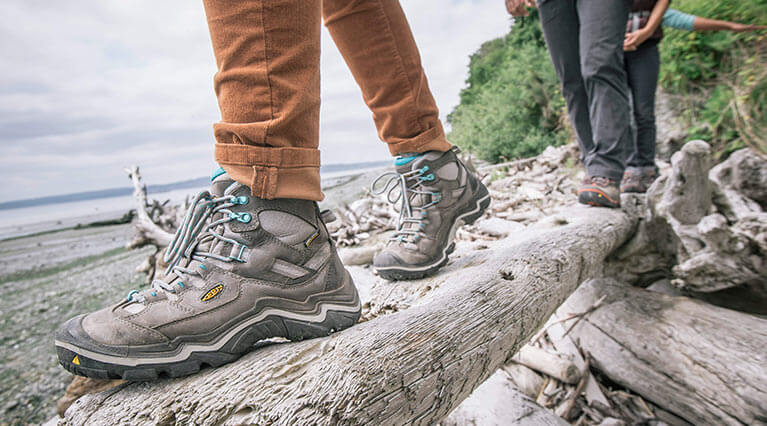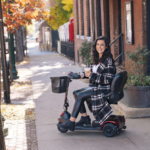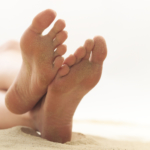The best walking and running shoes for osteoarthritis of the knee
Osteoarthritis is a degenerative joint disease and is the most common chronic condition of the joints.

Stability and neutral are the two main types of athletic shoe. Photo Credit https://captaincreps.com
by Brian Wu, Reviewed by William Morrison MD, Medcial News Today 18 May 2016
Osteoarthritis (OA) is most common in the knees, hips, lower back, neck, small joints of the fingers, and the bases of the thumb and big toe.
Cartilage covers the end of each bone. It provides a smooth gliding surface for easy joint motion and acts as a cushion between the bones. In people with OA, the cartilage breaks down, resulting in pain, swelling, and problems moving the joint.
Though arthritis can occur just about anywhere there is a joint, according to the American College of Rheumatology, the lifetime risk of developing OA in the knee is about 46 percent. As a result, the knee one of the most common areas affected.
There is no cure for OA, but there are things that can be done to reduce pain and improve knee function.
Physical exercise is useful in treating OA. Exercise can help to improve muscle strength, decrease joint pain and stiffness, and also lower the chance of disability due to OA.
| Why is it important to wear the right athletic shoes? |
The type of athletic shoes that people with OA of the knee wear are very important. As a result, people should take care to find the right type of shoe to wear.
The right type of shoe is important whether performing normal daily activities or walking or running to get in some exercise.
Wearing the wrong type of shoe only makes existing problems worse, and can cause damage and complication to the many joints in the feet.
The kind of shoes that people wear impacts directly on the load put on the knee joints. Elevated joint loads during walking can cause OA to progress more rapidly.
If someone has OA of the knee, the right shoe can help to reduce or even eliminate foot pain which plays a huge role in mobility.
| Fast facts on athletic shoes |
Here are some key points about athletic shoes.
- Stability shoes help control how the foot rolls when walking and running
- Neutral shoes are easy to combine with inserts or specially designed insoles
- Shoes with good cushioning reduce shock to the knees
- Arch supports help with weight distribution
- Laces can reduce pressure on the outside of the foot
| Types of athletic shoes |
Athletic shoes fall into two main categories: stability and neutral shoes.
Stability shoes are composed of a dense, cushioned midsole and a heel that is designed to help control motion and overpronation. Overpronation refers to the tendency of the foot to roll inward more than it needs to for weight distribution and shock absorption.
Stability shoes help to take the weight off of the ball of the foot which is very important for people with OA of the knee. For those whose feet roll unevenly, stability shoes also provide good cushioning and motion control.
Neutral shoes do not correct for uneven foot rolling but offer good shock absorption and cushioning. The neutral design also makes it easy to add an insert or custom-molded orthotic, which are commonly prescribed for people with arthritis.
People who are not sure whether their feet roll normally, a podiatrist, orthopedic surgeon or a store specializing in athletic shoes can help. They can look at the distinctive wear patterns of running or walking shoes and determine if they were caused by abnormal pronation.
Neutral sneakers are usually better for walkers and runners with normal pronation and no physical problems. People whose feet do not roll inwardly enough or have issues due to injury or age should look for a shoe that addresses their specific problems.
| Tips for choosing the right shoe |
Finding the right footwear involves more than choosing a favorite color or getting the right size. Certain things should be kept in mind when shopping for athletic shoes to help minimize knee pain.
Choose well-cushioned shoes
Shoes with plenty of cushion help to prevent shock to the knees while walking or running. Shoes that have a lot of cushion absorb the impact when the foot hits the ground, putting less stress on the knees. Much of the shock never even reaches the knees.
Well-cushioned shoes also help to lessen the impact of walking on hard surfaces such as concrete sidewalks and even standing on concrete floors.

Hiking boots provide support for walking comfortably on uneven terrain. Photo Credit https://captaincreps.com
| Pay attention to the soles |
Firm midsoles can help prevent feet from rolling inwardly too much. This is of particular importance for people with low arches. When feet roll too far inward, the lower leg and knee rotate inward each time the foot hits the ground. This inward motion can lead to knee strain and pain.
| Make sure they have arch support |
Arch supports help to “build up” the arches which helps to lessen pain and make walking or running more comfortable. Arch supports are critical for people with extremely flat feet.
A lack of support can cause discomfort when walking, but arch supports can help to alleviate this problem. They also distribute weight evenly, helping with balance. More importantly, they provide additional shock absorption and take the pressure off of areas that may be sore such as the ball of the foot.
| Make sure to get the right size |
Many people fail to get the right size shoe. People with wider feet should make sure to look for shoes that come in wide widths. There should be plenty of room in the toe area in addition to the shoe being long enough. Shoes that don’t provide adequate space can lead to blisters and other foot discomfort.
| Lace them up |
Athletic shoes should have shoe laces. Lacing up shoes helps minimize pain and risk of injury. Shoes that are tightly laced up cut down on uneven foot rolling and reduce impact loading rates.
Lacing shoes up tightly also reduces the pressure on the outside of the foot.
When the foot is firmly anchored in the shoe, friction is reduced which helps to prevent blisters. Make sure that the heel does not come out of the shoe when walking or running.
These steps help to make sure that the foot is properly supported, cutting down on foot or ankle injuries.

Firm midsoles are very important for stopping feet from rolling inwardly too much. Photo Credit https://captaincreps.com
| Buying a pair of athletic shoes |
It is a good idea to visit a shoe store where staffers are trained to help customers choose the right athletic shoe. They can make sure that the best shoe for foot type and activity is chosen.
Some shoes are better geared toward running, and others are designed for people who prefer walking.
Visit a podiatrist or another specialist for information about special inserts or orthotics that may help to improve mobility.
Unfortunately, OA of the knee cannot be reversed, but lifestyle changes such as incorporating exercise can help.
These are just a few things to look for when finding the best walking or running shoes for knee OA. It is important to invest in the right athletic shoes to avoid further aggravating the condition.
Shoppers should be prepared to ask questions and try on dozens of shoes if needed before finding the right one. All feet are different so shoes that are recommended for low arches or unevenness may not necessarily work for everyone.
Shoes should not have to be “broken in” and if they are too tight in the store, there is nothing that says that they will loosen up. Wearers should consult a doctor if pain and discomfort persist.
Source Medcial News Today
Also see
Some Ways To Choose Sport Shoes HSW Basel
Sneaker Savvy The American Council on Exercise ACE






